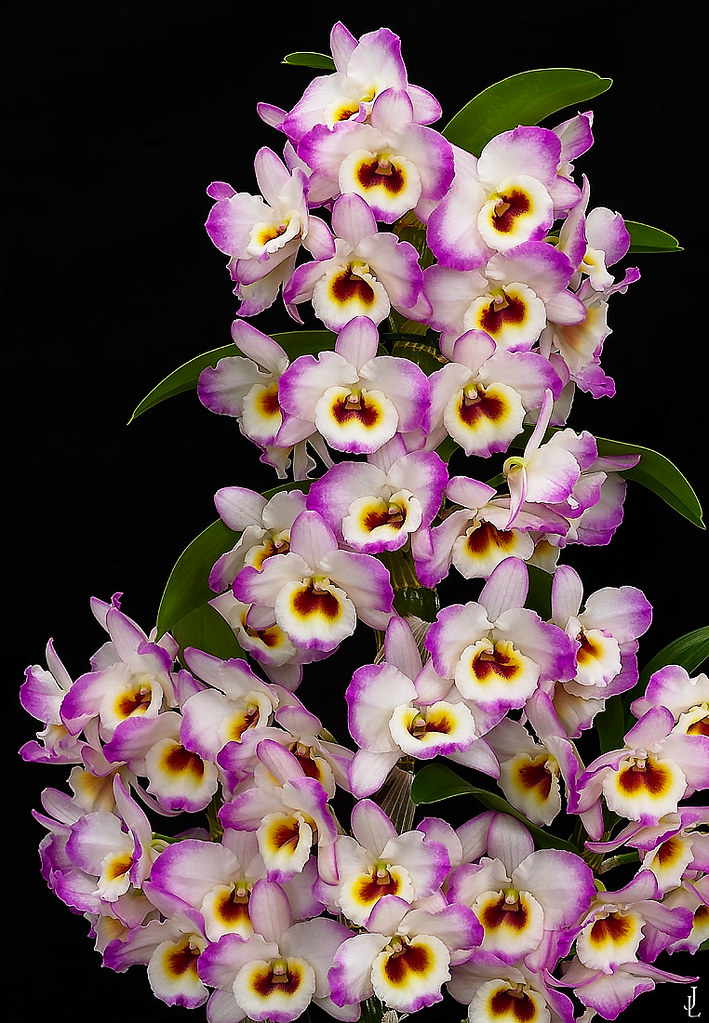
Dendrobium Nobile © Dendrobium Nobile Joao Lacerda Flickr
0.8 cups. every 9 days. Noble Dendrobium needs 0.8 cups of water every 9 days when it doesn't get direct sunlight and is potted in a 5.0" pot. Use our water calculator to personalize watering recommendations to your environment or download Greg for more advanced recommendations for all of your plants. Water 0.8 cups every.
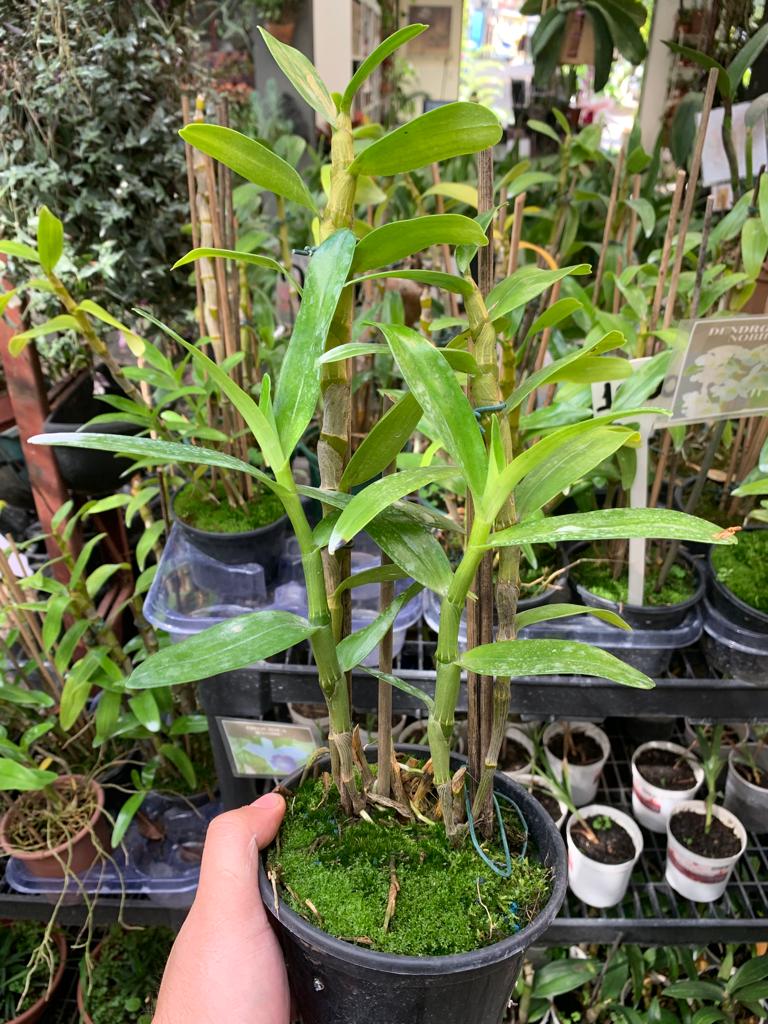
Orquídea Dendrobium Nobile Branco Orquidário Matsuoka
This variety is a pretty phalaenopsis dendrobium orchid that was hybridized in Hawaii. This Nobile-type dendrobium likes for its roots to be a bit cramped. It sends up long-lasting sprays of delicate white flowers. These blooms are fragrant and can last from 6-8 weeks. 'Uniwai Mist' can bloom more than once per year under the right conditions.

Orquídeas da Pachamama Dendrobium nobile Lindl. var. branco
Dendrobium nobile is commonly known as the noble dendrobium or the noble orchid. This orchid is renowned for its stunning flowers, which come in various colors such as white, pink, and purple. The flowers typically bloom in clusters and have a distinct fragrance. The noble dendrobium is a popular choice among orchid enthusiasts and gardeners.
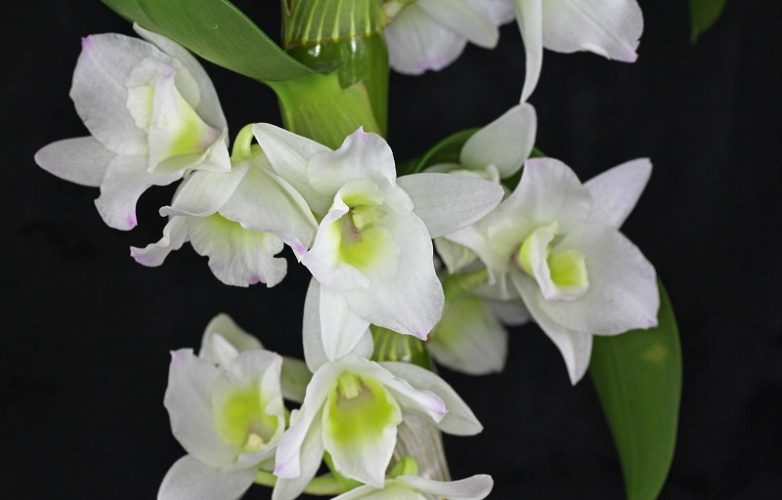
Dendrobium Nobile. Como Cuidar una Dendrobium Nobile 100 Útil
Nobile Dendrobium need cool night temperatures in the fall and winter months in order to stimulate flower bud development. Maintain day temperatures of 70°F to 75°F (21°C to 24°C), and night temperatures of 50°F to 60°F (10°C to 15°C) until buds appear. Once the buds appear, raise night temperatures up to 60°F to 64°F (16°C to 18°C.

Flores Do Dendrobium Branco De Nobile Imagem de Stock Imagem de
Dendrobium nobile is an orchid species identified by Lindl. in 1830. ORIGIN: From the Chinese Himalayas, Assam, eastern Himalayas, India, Nepal, Bhutan, Sikkim, Myanmar, Thailand, Laos and Vietnam that is found in broadleaf, evergreen, lowland forests and primary montane forests as well as on mossy limestone rocks at elevations of 200 to 2000 meters.

Comprar Orquídea Dendrobium Nobile Branca na Toca!
A Dendrobium Nobile will rebloom yearly when a reduction of 20 to 30% in water has occurred, temperatures have dropped to 55° F or 13° C during fall and winter, and when potassium levels are increased. A Dendrobium Phalaenopsis will rebloom up to three times a year when watering is slightly decreased during fall and winter, but all other.

White Dendrobium Orchid Orchids Delivered Moyses Stevens Flowers
Dendrobium nobile is known for its abundant, colorful and long-lasting flowers that grow on cane-shaped stems. Not the easiest houseplant to grow but more than worth it once it shows its stunning blooms! Keep reading for everything you need to know about Dendrobium nobile care and growing Dendrobium nobile in your own home.
MI JARDÍN DENDROBIUM NOBILE BLANCO
Dendrobium Nobile is a large plant that even at home can grow up to 80-100 cm. The leaves are thick, leathery, dense, and oblong, and the stems of the plant are thick, dense, and fleshy. Peduncles are low, and appear on leafless, old shoots, on which, for the 2nd year of life, 3-4 flowers grow, about 10-12 cm in diameter.

Orquídeas da Pachamama Dendrobium nobile Lindl. var. branco
In terms of care, Dendrobium Nobile orchids prefer medium to high-light and temperatures between 65 to 75 degrees Fahrenheit during the day, with a 15 degree temperature drop at nights. During the growing season, these orchids like to be watered frequently, but need a winter rest in order to bloom. Dendrobium Nobile orchids are just one of the.

Dendrobium Nobilis White Towering Nobile Orchid Premium Quality with
First, a quick summary. How to care for a dendrobium nobile orchid: Keep in bright light, at 65-85 °F (18-30°C) and 50-70% humidity. Plant in orchid potting mix, water when the top of the potting medium is dry and fertilize lightly every 1-2 weeks. Prune after flowering.
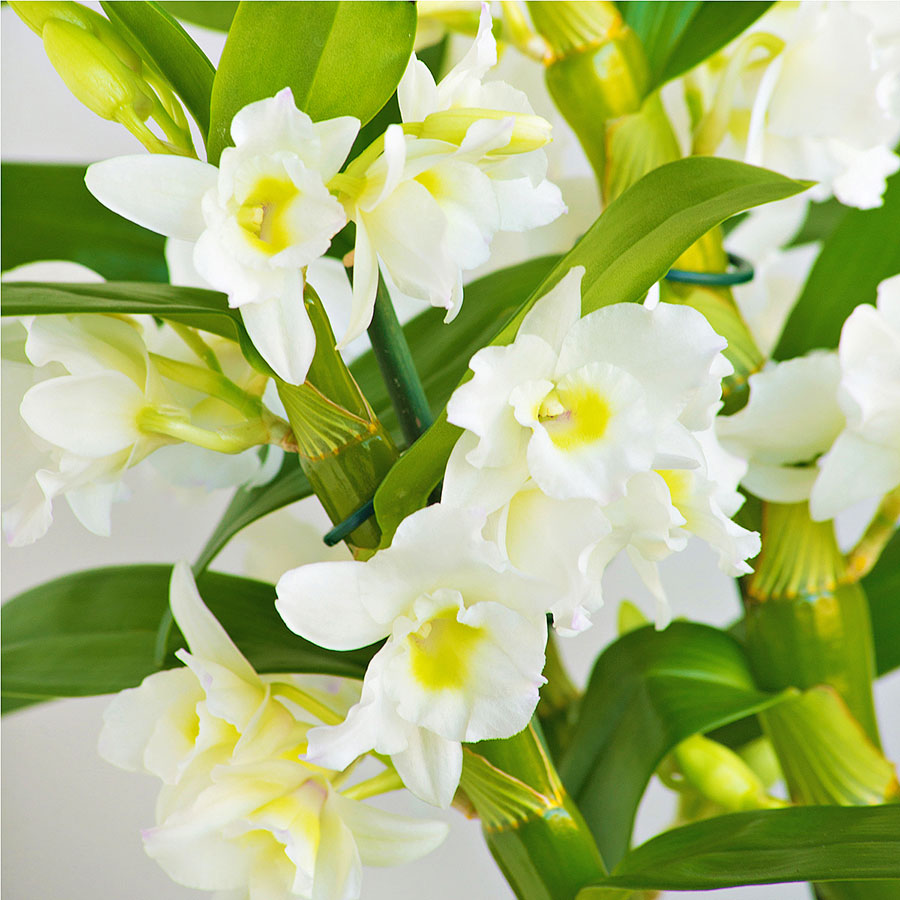
Dendrobium Nobile Orchid Apollon White Delivery in Netherlands by
Dendrobium nobile. A soft cane orchid in the section Dendrobium. Most of the these are epiphytes growing on trees or sometimes rocks. They are sympodial orchids with thin, white roots. Every year they produce new, fleshy pseudobulbs (canes) up to 1.2 m long. Canes are swollen at the nodes. Pseudobulbs are soft and mostly greenish but can be.
Dendrobium Nobile White
Dendrobium Nobile Care Infographic. The Dendrobium nobile is a commonly-grown orchid variety of the Orchidaceae family that has pseudobulbs. This ornamental plant produces charming flowers that have a pleasant aroma.. By providing the proper care and environment to this precious Dendrobium genus plant, your garden can become a center of attraction.

Dendrobium nobile White Orchid YouGarden
Dendrobium nobile orchids need bright light to grow and can withstand direct sunlight. Average room temperatures of between 65 and 85°F (18 - 30°C) are ideal, and 50 - 70% humidity will help your orchid thrive. Orchid potting mix is the perfect growing medium and the plant needs feeding every two weeks.

LINDA ORQUÍDEA DENDROBIUM NOBILE BRANCO RARO YouTube
Remove all the growing medium from the root mass, and then cut away any long dangling or dead roots. Put the plant in a pot close to the size of its root mass, and cover the roots with orchid potting medium. Press down the potting medium firmly, and wait one week to water it thoroughly.

Orquídeas da Pachamama Dendrobium nobile Lindl. var. branco
Dendrobium nobile (Noble Rock Orchid) is an epiphytic or lithophytic orchid boasting short racemes of 2-4 sweet-scented, rose-pink flowers, up to 2 in. across (5 cm), adorned with a dark purple lip. Blooming from winter into spring, the showy and delicate flowers arise from the leafless nodes, and they last 3-6 weeks.
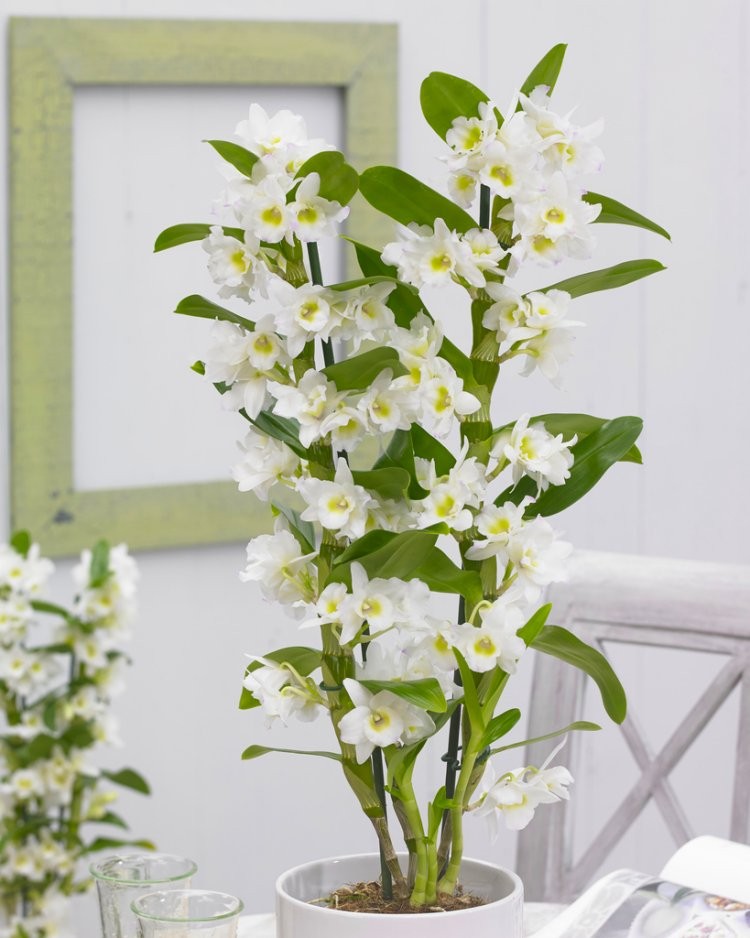
Dendrobium Nobilis White Towering Nobile Orchid Premium Quality with
Dendrobium nobile would lose all its leaves before starting to flower, whereas the newer hybrids may keep some of their leaves. Flowering - Nobile flower in the fall to winter after being cooled to under 50 degrees at night for a month. They grow best outside down to freezing temperatures so leave them until hard freeze is threatened before.